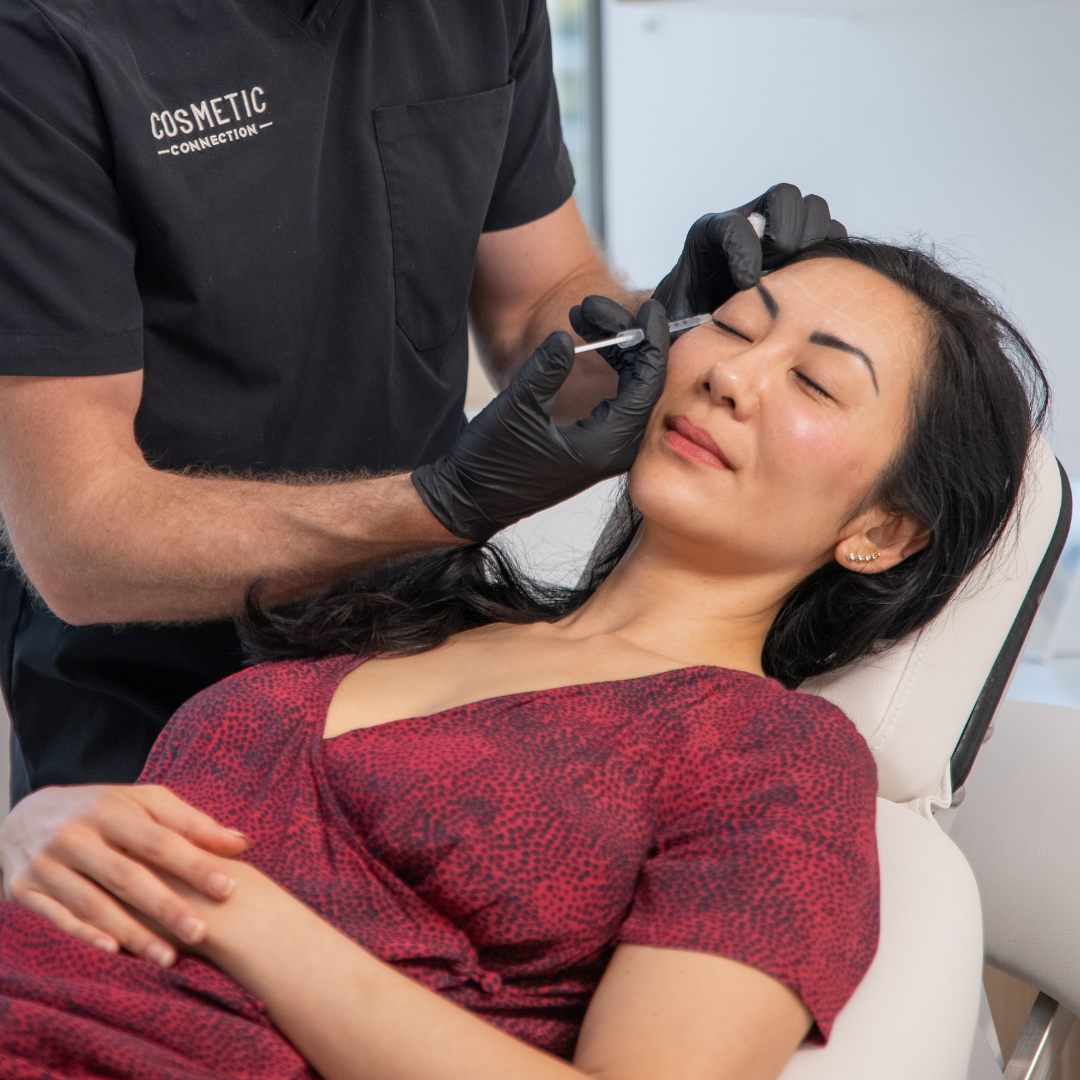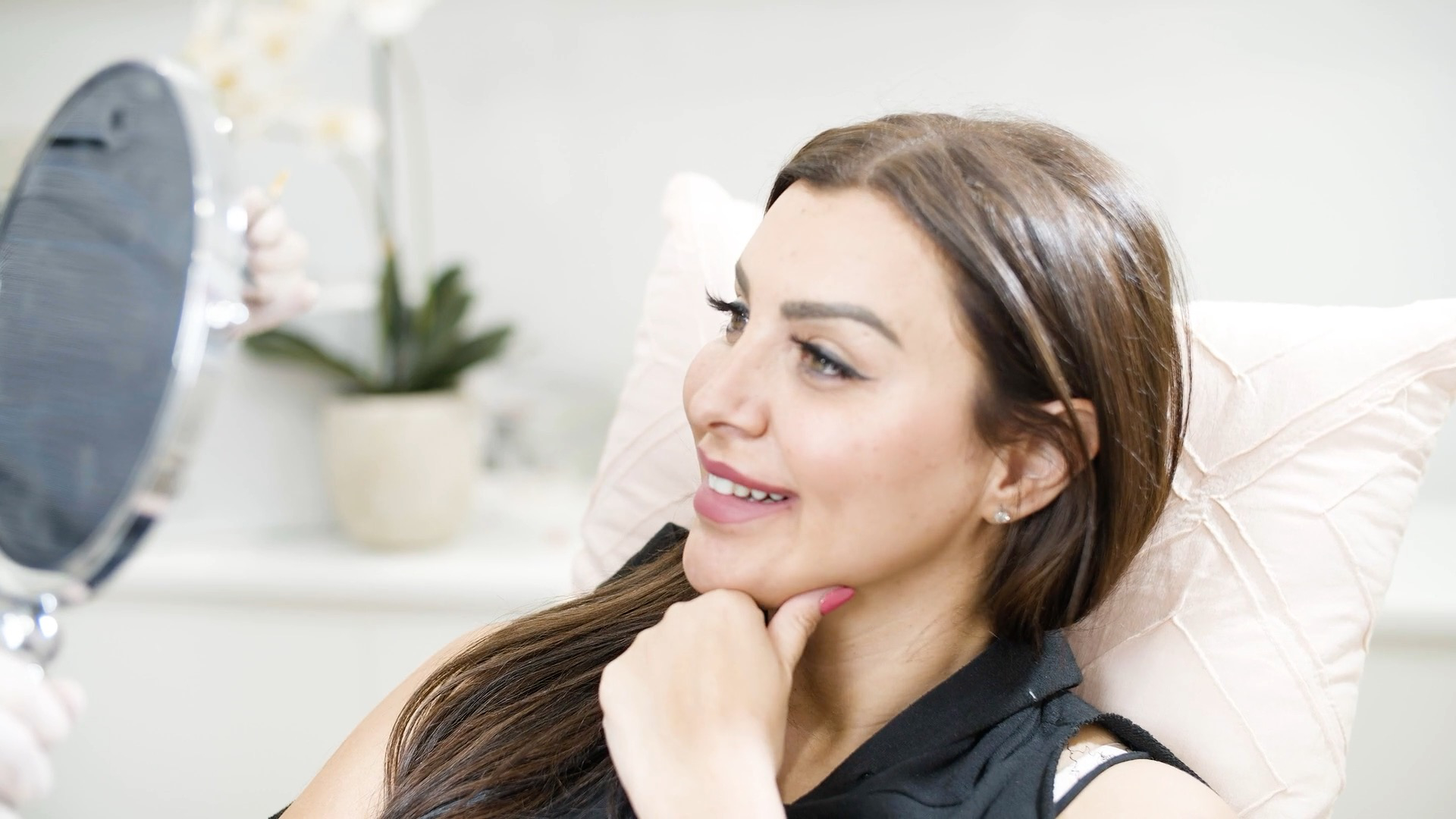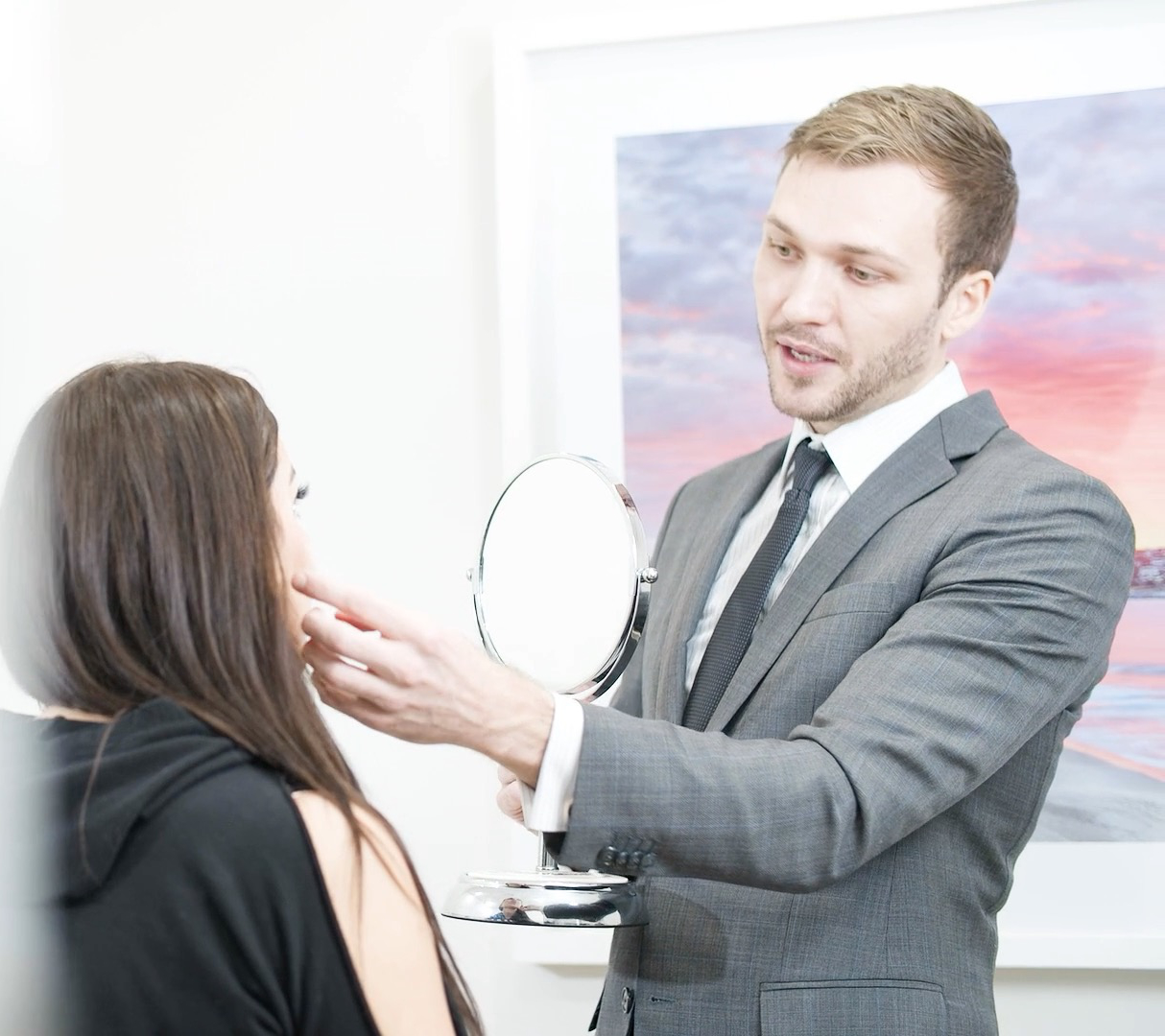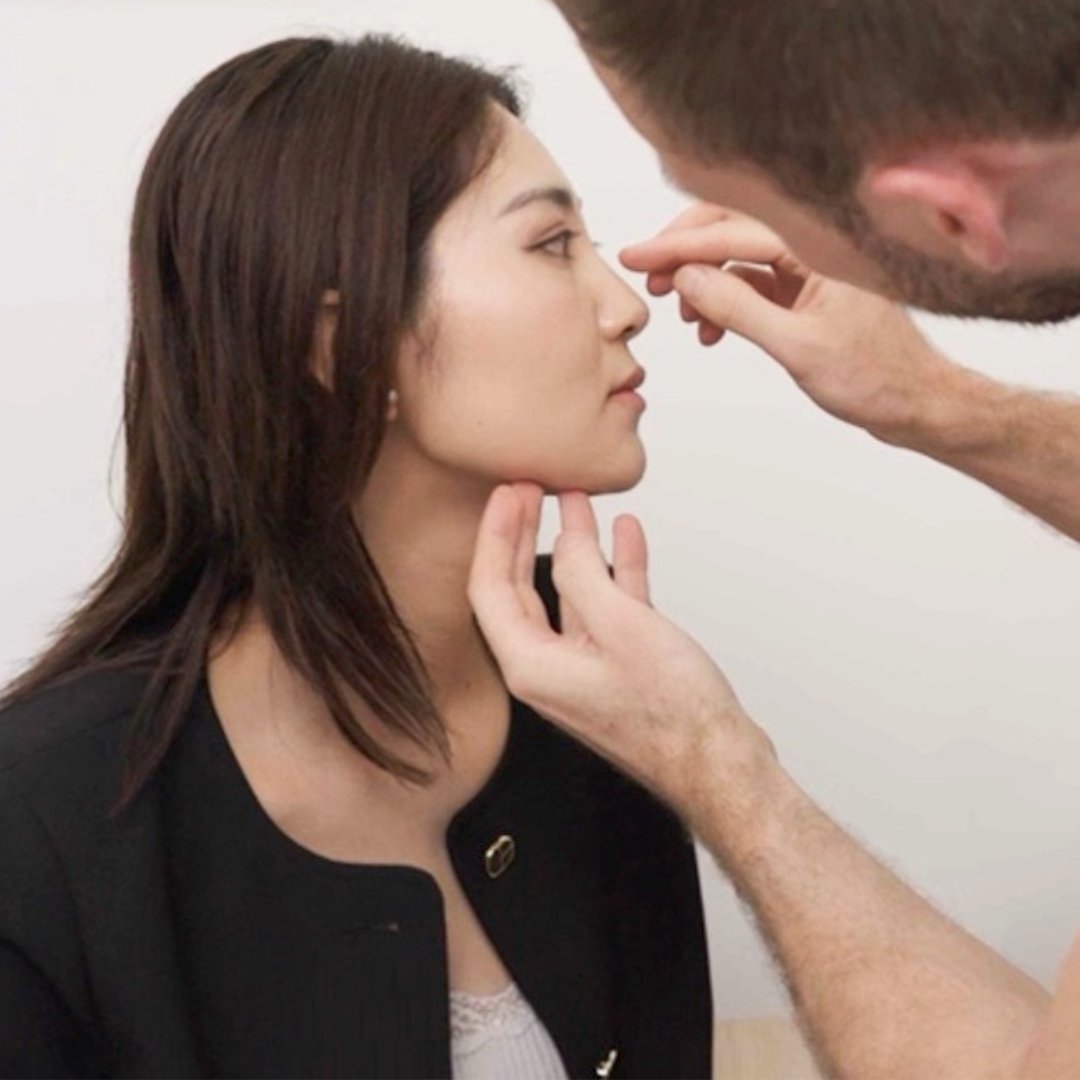
Anti-wrinkle injections
We use the smallest needles on the market, and precisely map out your injections to avoid any vessels to minimise the chance of bruising and swelling.
You can reduce bruising and swelling by avoiding alcohol and intense exercise before and after your appointment, as well as by gently applying a cold pack.
To avoid brow and eyelid heaviness we perform a carefully facial assessment to determine the most suitable injection patterns and treatment dose.
You must avoid applying pressure to the treated areas after your treatment to keep the risk of heaviness low.

Dermal fillers
All dermal filler treatments will have some amount of swelling. Delicate areas like your lips and under eyes are more prone to swelling and bruising.
You can reduce swelling and bruising by carefully following the treatment preparation and aftercare guidelines.
Lumps after filler are usually caused by swelling, and these resolve as any local swelling subsides. We avoid filler lumps by performing your treatment slowly and carefully, and by moulding the filler after injection.
In the rare circumstance of a persistent filler lump, we can easily treat it in a number of ways.
Nodules are small, hard lumps of scar tissue, often the size of a grain of rice. They are not harmful, and generally not visible. Certain brands of dermal filler are more likely to cause nodules, and we tend to avoid using these.
To avoid dermal filler infections, we extensively clean your skin before the treatment. We also follow hand hygiene and infection control principles.
You must keep your skin clean after your treatment.
Filler infections are usually treated with antibiotics and filler dissolving. Severe infections may require surgical drainage.
A vascular occlusion is a very rare side effect from filler. It occurs when filler is injected inside an artery of vein, blocking blood flow. This deprives the tissue (skin, muscle, fat, cartilage) of oxygen, and if not identified and treated promptly, may result in permanent tissue damage requiring surgery.
There are a number of ways to reduce the risk of a vascular occlusion:
- We adhere to safe injection practices: we inject filler in very small aliquots using low pressure needles.
- Anatomical knowledge: an intimate knowledge of vascular anatomy helps us to avoid injecting in areas where blood vessels are know to be located.
- Examination: before your treatment we look and feel for any blood vessels in the planned treatment area.
- Ultrasound mapping: for higher-risk areas, we may use an ultrasound to visualise blood vessels in the planned treatment area.
You must always tell us about any trauma or surgery you’ve had in the planned treatment area, and if you’ve had any side effects from previous injectables, as this helps us to plan a safe treatment.
If a vascular occlusion occurs, it is usually visible immediately. The affected skin is often pale, and then may become dark red, or blotchy and mottled. Over the next 24 hours, the affected area will develop blisters and pustules.
It’s imperative to keep an eye areas treated with fillers, and any nearby skin for the first 24-48 hours. If you notice any skin discolouration, you should immediately contact your treating clinic and send through photos for advice.
A vascular occlusion is treated using dermal filler dissolver. Other adjuvant treatments may also be used on a case by case basis. If treated promptly and effectively, then there will be no lasting tissue injury.
Visual impairment of one or both eyes is an extremely remote risk of dermal filler injections. It generally occurs during the procedure, and is more commonly seen when inexperienced injectors use high-risk technique on complex areas such as your nose and forehead.
There are countless ways we minimise the risk of blindness after fillers. The best way for you to minimise the risk is to ensure your treatment is done by a reputable doctor-led cosmetic clinic with strict quality control policies and standards, and who have a culture for education and safety amongst their staff.

Fat dissolving injections
Swelling is guaranteed to occur with fat dissolving injections, so you should schedule your day accordingly.
Most swelling subsides in 3-4 days, and you can minimise it by following the treatment preparation and aftercare guidelines.
Fat dissolver can temporary stun your lower lip muscles when used to reduce jowls and under chin fullness.
We use a careful injection technique and anatomical landmarks to keep this risk to a minimum.
All treatments involving injections have a risk of skin infections. We carefully clean your skin and follow infection control principles to reduce the risk of infections.
Fat dissolvers have been reported to cause hair loss, and skin pigmentation in those with darker skin tones.
We reduce this risk by carefully injecting the fat dissolver at the correct depth beneath the skin.

Filler dissolving
Bruising and swelling are more likely in delicate areas like your lips. A gentle injection using a small needle can reduce both.
You can further reduce swelling and bruising from filler dissolving by following the preparation and aftercare instructions.
Allergies to filler dissolver are rare and usually mild. However, severe allergies known as anaphylaxis are possible.
People with allergies to bee and wasp stings may have a higher risk of allergies to hyaluronidase (filler dissolver).

Thread lifting
It is normal to have bruising and swelling after thread lifting. These are usually moderate, and typically resolve over 3-5 days.
To minimise bruising and swelling, you must strictly follow all preparation and aftercare instructions.
Dimpling is a phenomenon that occurs due to the bunching of your skin when it is repositioned with lifting threads. It is most visible immediately after your appointment, and generally settles over 2 weeks.
A sensation of tightness, shooting pain, and clicking can occur, especially when threads are used around your jawline.
These side effects usually resolve on their own as the inflammation around the inserted threads settles.
To avoid infections after a thread lift, the treatment is typically performed using an aseptic technique. You skin will be thoroughly cleaned, and the clinician will follow strict hand hygiene and infection control principles. You may also be given a short course of antibiotics to reduce the risk of an infection.
You must strictly follow all thread lift aftercare instructions to avoid an infection.
Thread lift infections are usually treated with antibiotics, but if severe may require surgical removal of the affected threads and drainage.
Nodules are small lumps of scar tissue, often the size of a grain of rice or small pea. They are not painful, rarely visible, and usually noticed incidentally when washing your face or applying makeup.
Nodules are not harmful and do not routinely need treatment.
We want to answer any possible questions you may have
If you can’t find the answers to your questions, get in touch with the clinic and we will get back to you as soon as we can.
It can be very challenging to work out who to trust with your cosmetic treatment. Most clinics are overseen by inexperienced injectors with minimal training in cosmetic injectables, and no experience in managing adverse events.
Unfortunately, many of these injectors are also naive about their own inexperience, mislead the public about their experience, and trivialise the procedures, significantly increasing the chance of a side effect. This is made worse because they also don’t know how to manage side effects properly, and often use non-cosmetic doctors located interstate to authorise your treatment.
The first sign of a clinic that practices safely is the presence of a head doctor dedicated to cosmetic medicine. Look at their range of results and how comprehensive and informative their website is. Make an enquiry to check how diligent and professional they are. Finally, consider starting with a consultation to assess their professionalism.
